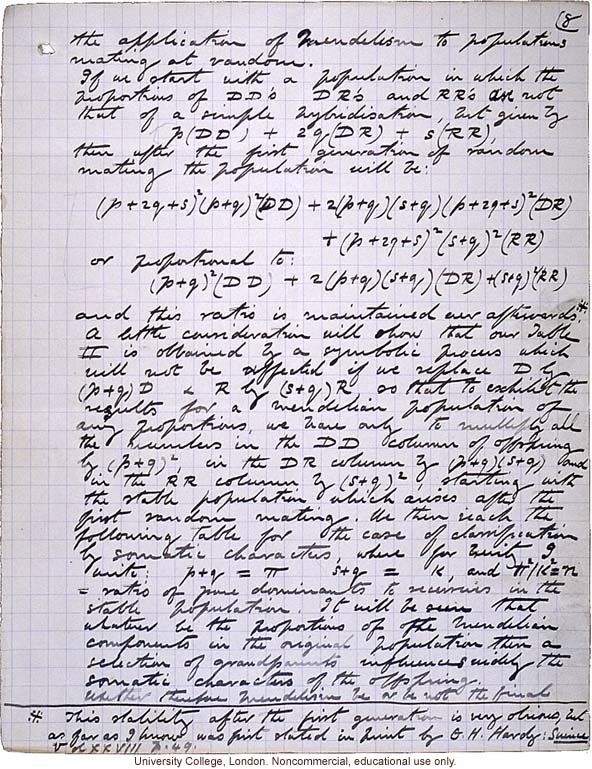[handwritten]
the application of Medelianism to populations mating at random.
If we start with a population in which the proportion of DD's DR's and RR's are not that of a simple hybridization[sic], but given by p(DD) + 2q(DR) + s(RR),
then after the first generation of random mating the population will be:
(p +2q +s)[superior 2](p +q) [superior 2](DD) + 2(p + q) (s + q) (p + 2q + s) [superior 2](DR)
+ (p + 2q + s)[superior 2] (s + q)[superior 2](RR)
or proportional to:
(p + q)[superior 2](DD) + 2(p + q) (s + q) (DR) + (s + q) [superior 2](RR)
and this ratio is maintained ever afterwards.[symbol near margin]
A little consideration will show that our Table II is obtained by a symbolic process which will not be affected if we replace D by (p + q) D & R by (s + q) R, so that to exhibit the results for a Mendelian population of any proportions, we have only to nullify all the numbers in the DD column of offspring by (p + q)[superior 2], in the DR column by (p + q)(s + q) and in the RR column by (s + q)[superior 2], starting with the stable population which arises after the first random mating. We then reach the following table for the case of classification by somatic characters, where for [illegible] G[inferior 2] write: p + q = [pi symbol] s + q = K, and [pi symbol, superior 2]/K[superior 2] == N = ratio of pure dominants to recessives in the stable population. It will be seen that whatever be the proportions of the Mendelian components in the original population then a selection of grandparents influences widely the somatic characters of the offspring. Where therefore Mendelism be or be not the final
[symbol for footnote] This stability after the first generation is very obvious, but as far as I know was first stated in print by G. H. Hardy: [italics]Science[end italics] Vol. XXVIII, p. 49.
[end]


